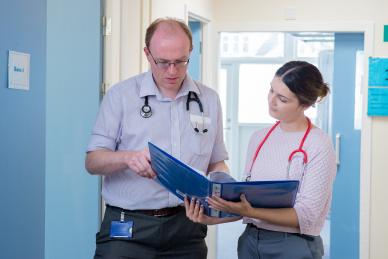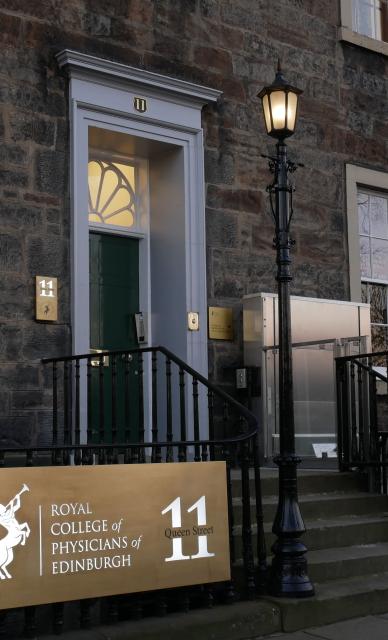Join the College
The College is here to support you at all stages throughout your career to enable you to deliver the highest standards of healthcare to patients.
Empowering medical excellence, shaping healthcare futures.
The work is very patient-centred, with holistic care of the patient and family being paramount, and working with the MDT plays a large part in this. Patient numbers in general are lower than in the acute setting, allowing time to be spent with patients and their families, ensuring that their concerns and questions are dealt with. It is very rewarding to see a patient who was admitted with severe symptoms get relief and be able to make the most of their time
Giving advice and teaching play a considerable part in most jobs, and there are many opportunities available to increase teaching opportunities through close links with local hospital teams, universities etc
Most hospices will encourage SAS doctors to get involved in some degree of management activity, but the extent of this is often up to individuals - the emphasis is very much on clinical work
Most hospice/inpatient unit SAS posts will involve some degree of on-call commitment, but this can vary from a daytime weekend approximately once a month, to a 1 in 4/5 24-hour on-call. However for most jobs, the on-call will be non-resident
Dr Fiona Robertson is a Specialty Doctor. Fiona has been working as an SAS doctor for seven years, working as a trainee for four years prior.

Like many SAS doctors, there were multiple reasons. My main one was that I felt an SAS post would allow me to concentrate on clinical duties, which I much prefer to the more managerial role undertaken by Consultants. I also felt that an SAS post would allow a better work/life balance.
This depends on the stage and previous experience of the Trainee. A new Trainee with minimal experience will be supervised more closely than an SAS Doctor. As the Trainee progresses, the clinical supervision will reduce as their experience and knowledge increases. Over this time, the emphasis on the non-clinical aspects, such as management, increases.
Most days start with a brief handover from the nurses, highlighting any issues that have arisen with patients overnight. The rest of the morning is usually taken up with a ward round - either Consultant led (one to two per week) or alone. There is a multi-disciplinary team (MDT) meeting once a week, when each patient’s case is reviewed
Afternoons are usually a mixture of admitting patients, reviewing day hospice patients when required and patient/family discussions, updating them on progress and discussing future care
As well as the above, we offer a telephone advice service, and may get telephone calls from community palliative care nurses, GPs, district nurses and hospital teams, looking for advice or admissions


Three years post-registration experience, with previous experience in palliative medicine being desirable.
Scotland Deanery SAS Support Specialist and Associate Specialist Doctors and Dentists | Scotland Deanery (nhs.scot)

The College is here to support you at all stages throughout your career to enable you to deliver the highest standards of healthcare to patients.